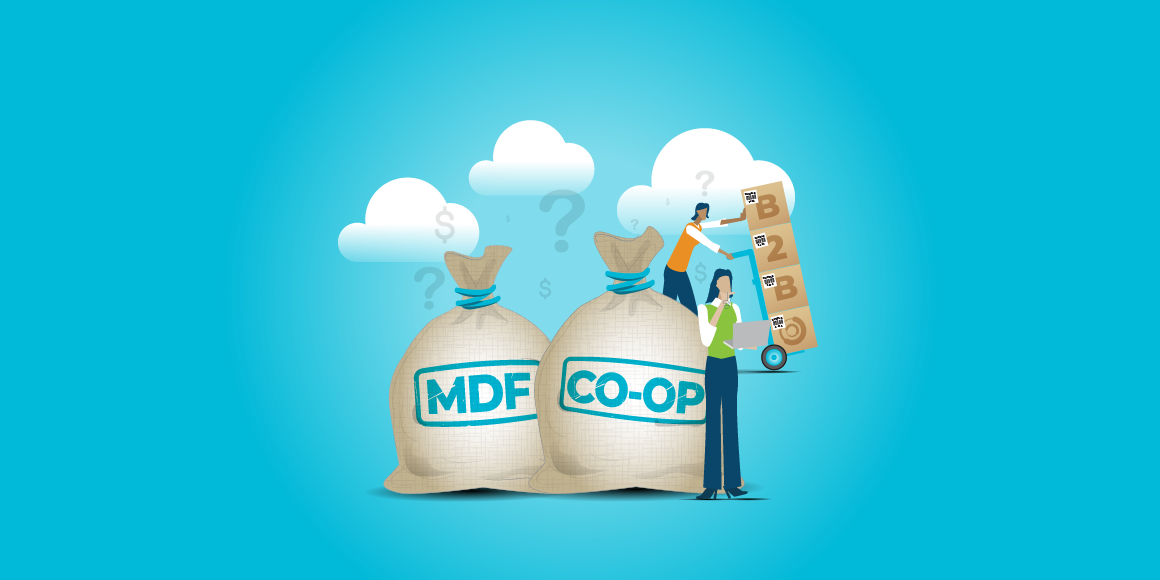The past few years have seen tremendous disruption for traditional supply chains. In the current environment, many channel partners have found themselves in “adapt or die” mode in order to overcome challenges ranging from geopolitical developments and a changing competitive landscape, to eCommerce, A.I., and shifting customer expectations.

One challenge in particular has involved the availability and effective use of Marketing Development Funds (MDF) and Co-Op funds.
During the pandemic, many of the use cases for these funds—such as in-person trainings, counter days, trade shows, etc.—were suspended or limited. Today, with so much business activity having transferred over to the virtual realm, these events have also been slow to ramp back up.
In addition, it’s been harder for channel partners to secure marketing development funds from vendors. Understandably, vendors have tended to increase requirements for releasing these monies during challenging economic circumstances.
But even when vendors do provide some type of funding to their channel partners, it seems that not all partners are able to effectively deploy them. In fact, it’s estimated that on average, partners could be leaving between 25%-50% of these funds on the table when they’re made available. So, what gives?
The Funding Disconnect
Problem #1: Marketing
There seems to be a few explanations for this disconnect between the availability and the spending of these funds.
First, some channel partners don’t have a sophisticated marketing department that would allow them to effectively utilize MDF or Co-Op funds. These partners may not have mastered the latest digital marketing techniques. They may not have the manpower to put an innovative strategy into action. Or the funds themselves might not be explicitly directed towards the type of marketing these partners are now doing.

Source: Localogy (via Brandmuscle)
Vendors might be looking to work with partners who are aggressively promoting themselves and their products. Without the proper marketing resources, though, these partners will be unlikely to make use of any funds that are made available, even if they were potentially interested in doing so.
Problem #2: Support
This brings us to another issue widening the funding disconnect: a lack of vendor support.
In many cases, channel partners are looking for off-the-shelf promotions that don’t require much legwork or self-created resources. If vendors aren’t providing marketing programs themselves, however, it then becomes incumbent on their partners to promote products which they may not feel any particular loyalty to.
Sure, the MDF or Co-Op funding might be seen as a nice incentive. But when these monies have to be strategically deployed, then diligently accounted for, that’s a lot of time and resources that need to be dedicated to something whose ROI may be murky at best for a channel partner.
Problem #3: Approval
A final problem involves the often-cumbersome process of applying for funding. In some cases, there could be a complex up-front approval process that ends up serving as an obstacle to adoption.
In other cases, these marketing development funds may be reimbursed after-the-fact, through a claims process that ends up further deterring partners from applying. Much like making an insurance claim, these dealers or resellers can’t be certain that they’ll even receive the funds, so why take an unnecessary capital risk unless the returns are clear and substantial?
Conclusion: The Funding Reconnect
Despite these challenges, there are certain marketing development fund best practices that vendors can follow to help bridge the disconnect. These include things like:
- Defining clear program goals and KPIs that optimize ROI
- Offering more transparency and better communication about how MDF or Co-Op funding is expected to be used
- Providing a more simplified approval and/or reimbursement process for channel partners to navigate
- Offering better administrative support with resources like automated systems, robust marketing platforms, and aligned incentives
All of this seems to suggest a more general need throughout the supply chain, which is stronger relationship-building between suppliers and their channel partners. Maybe this involves vendors stepping up their marketing enablement efforts to better support their reseller network. Or it could mean dealers themselves being more direct in communicating what they need and expect.
But perhaps it could even be some combination of the two. In any case, an improved relationship will mean that opportunities and accountability are better understood on both sides, and expectations are clearly outlined from the start.
Looking to help your channel partners take better advantage of their MDF or Co-Op? Contact us to find out how a strategic marketing development funds program may be just what you need.






